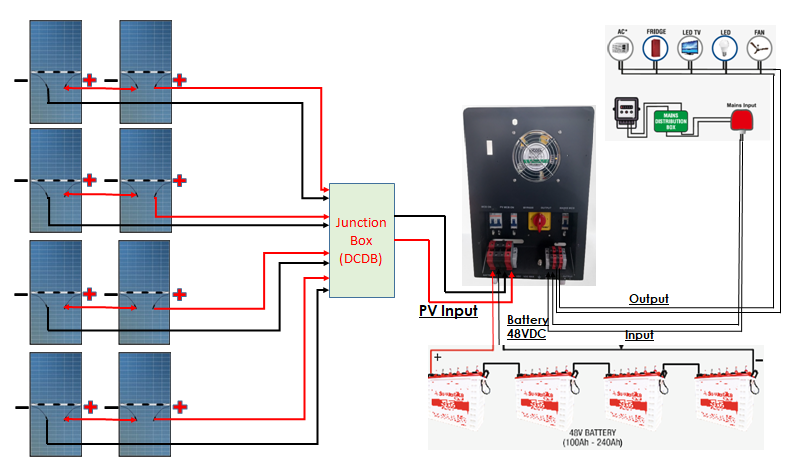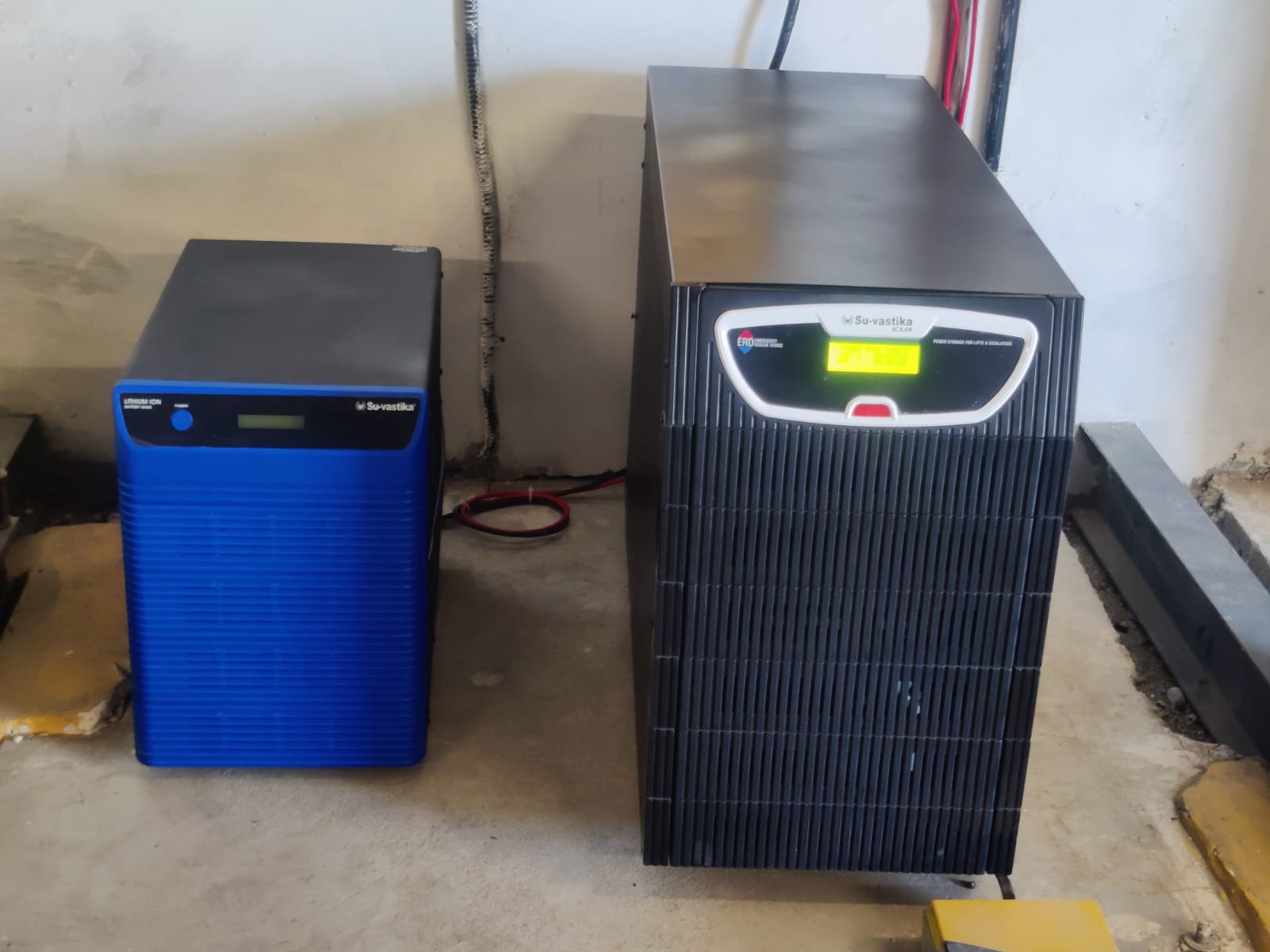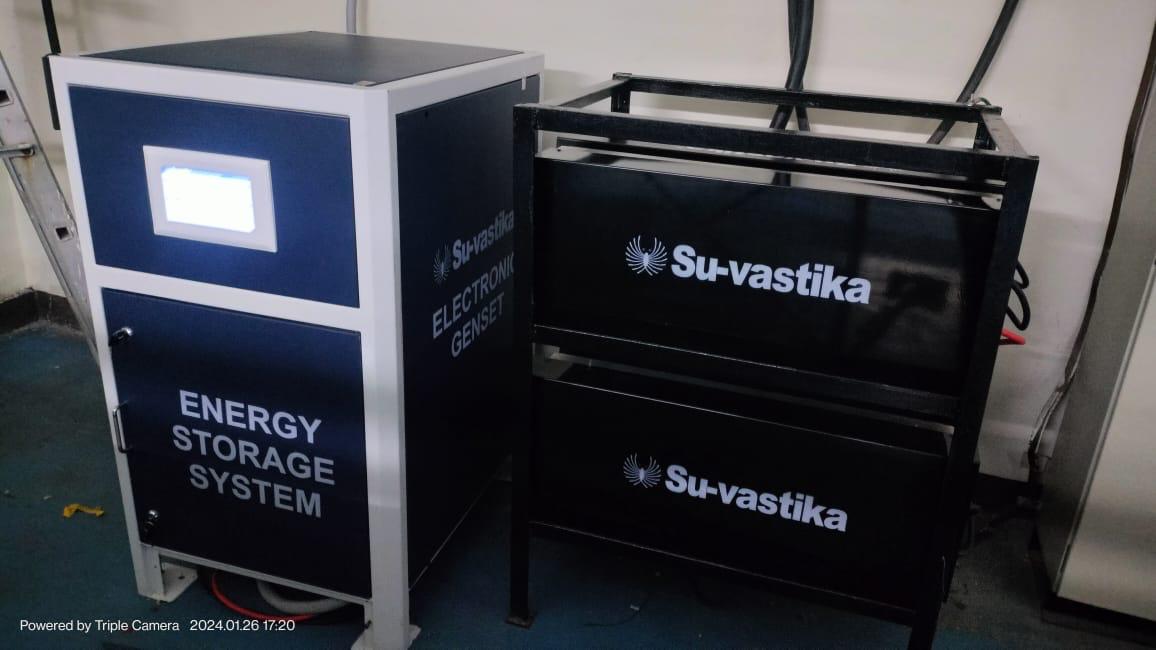
The sizing of the Solar charge controller according to the battery sizing is very important to understand so that we don’t design a system that can be harmful to the batteries or can explode, especially Lead Acid batteries. A solar charge controller is a device that regulates the flow of electricity from solar panels to batteries.https://www.sciencedirect.com/topics/engineering/charge-controller It prevents the batteries from being overcharged or undercharged, which can damage them. Solar charge controllers are sized based on the following factors:
- Solar array output: The solar array output is the total power the solar panels can produce. This is typically measured in watts.
- Battery bank voltage: The battery bank voltage is the voltage of the batteries the solar charge controller will use. This is typically 12, 24, or 48 volts or a multiple of 12 Volts in the case of lead Acid batteries.https://suvastika.com/how-to-match-the-solar-panel-voltages-and-battery-voltage-in-solar-hybrid-pcu/
- Battery bank capacity: The battery bank capacity is the amount of energy the batteries can store. This is typically measured in amp-hours. So, generally speaking, the Tubular lead Acid battery needs to be charged by 10% of its rated capacity. So, for example, if we use a 150 Ah Tubular battery, we can give 15 Amps of charging to charge the tubular battery. So if we are installing a single 150 Ah Tubular battery in a Solar System, we should ensure that we don’t charge this battery beyond 20 Amps charging current; otherwise, the Tubular battery may be bulged initially and might explode if we try to charge with 40 or 50 Amps charging current.

Solar System with battery and Solar Panels
For example, if you have a solar array with 1000 watts of output and a 24-volt battery bank, you will need a solar charge controller with a minimum amperage rating of 1000 / 24. It will be 41 Amps charging current; theoretically, we get it from the solar panels. So if there is a tubular battery, the charge controller will Charge the battery depending upon the PWM or MPPT charge controller. The PWM will give approximately 30 Amps of charging from the 1000 Watt Solar panels, and MPPT will give approximately 38 to 39 Amp Charging current as the 100% of the Solar panels’ output is impossible to get. There will be a loss in wires, and the maximum solar peak power will be for 3 to 4 hours. As cleaning the solar panels in most areas is impossible, a loss will also be added to that account. The Tubular lead Acid batteries need to be charged in 10 hours, but what will be the result if we charge them faster? As we see in most of the recent installations done in India and Africa and other such countries where the Solar PCU IS USED TO INSTALL HYBRID SOLAR OFF-GRID SYSTEMS, THE MANUFACTURER is giving HIGH AMPERE CHARGE CONTROLLERS IN SIDE THE PCU to give the option of installing higher capacity of Solar panels to destroy the battery life. Battery explosion incidents are happening in Tubular Lead Acid batteries. Then a few of the manufacturers are trying to convince that their PCU does the Load Sharing when the grid is available so that the solar will share the Load between the battery and Load, which is a false propaganda by the manufacturers. No one is checking that in the Solar PCU, the power from the solar panels can only charge the battery and can’t run the Load when the grid power is available. In most if the Solar PCUs available in the market the solar panel charges the Tubular battery to 100% And than the PCU switches on the Inverter mode and start giving power to tge load even when the Grid is available and that time load is shared between solar panel and battery. So one should consider the Charge controller and solar panels rating before installing the panels. Having more panels with a smaller battery will create more problems for the user as the water topping will be more required. Battery life will be reduced, and if the panel size is too big for the battery to handle, then the chances of battery explosion cant be avoided in the Solar PCU system.
Lithium Battery option for bigger charge controller designing: the Lithium battery can be charged at 50% of its capacity, so with a Lithium battery, one can use a bigger charge controller and can install a higher solar panel size bank.https://suvastika.com/lithium-battery-option-in-inverter-ups-solar-pcu/#:~:text=We%20at%20Su-vastika%20have%20provided%20our%20inverter%2FUPS%2FSolar%20hybrid,only%20connect%20Tubular%20SMF%20and%20lead%20Acid%20batteries.
Here are some additional tips for sizing a solar charge controller:
- You may need to size your solar charge controller for a higher amperage rating if you have a bigger battery bank sizing or installing a Lithium battery bank.
- If you plan on using your solar system to power high-wattage appliances, you may need to size your solar charge controller according to battery bank sizing and than use higher battery bank voltage like 48V or 96 or 180volt battery bank sizing so that the current is reduced through the solar panels.
- If you are unsure how to size a solar charge controller, it is always best to consult a solar installer. They can help you choose the right solar charge controller for your needs.






